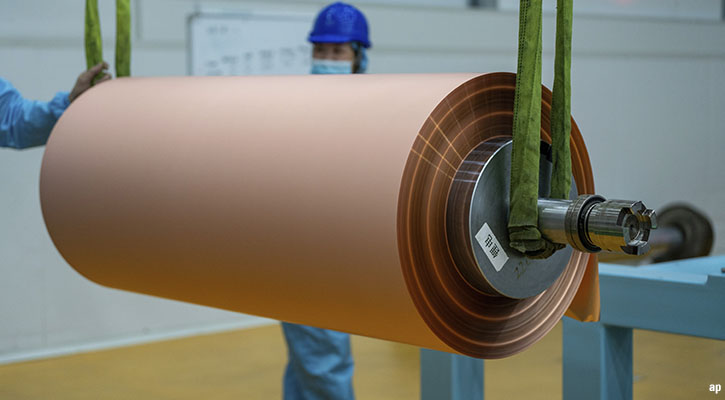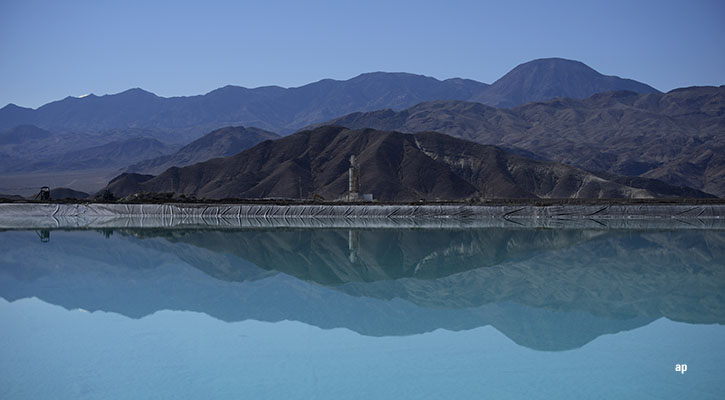
Terms like "net-zero" and "energy transition" are in the vocabularies of a lot of investors now. Net-zero is shorthand for "net-zero greenhouse gas emissions by 2050," with a target of 45% reduction in emissions by 2030.
World leaders aim to limit global warming to well below 2.0 degrees celsius and preferably at 1.5 degrees celsius compared with preindustrial levels, as negotiated in the 2015 Paris Agreement. That would involve adopting goals to hit net-zero emissions by 2050, via a transition away from fossil fuels to low carbon energy sources.
The ongoing energy transition will create an outsized demand for several critical metals that the mining industry might not be able to meet. This could cause commodity price inflation that will benefit investors, but may also hurt the overall economy.
"There are huge deficits looming over the next seven years, and no matter how you turn it around, we're going to run short in the face of demand," says Robert Cohen, vice president and portfolio manager of the silver-rated Dynamic Strategic Resource Class F Fund.
"We have the supply we need until 2024, after which we will have deficits in all metals: copper, aluminum, lithium, cobalt, etc," adds Curtis Gillis, portfolio manager of CI Global Resource Corporate Class. Already, the constraints are considerable: "copper inventories are at a historically low level of 200,000 tonnes, whereas ten years ago they were at 900,000 tonnes."
Too Much Demand, Not Enough Supply
The obstacles are disproportionate and are concentrated at two extremes: on the one hand, excessive demand and expectations; on the other, supply constraints.
"There are three major underlying trends that will create an unprecedented need for metals," says Benoit Gervais, senior vice president and team leader for natural resource investments at Canada Life:
• the onshoring movement;
• the shift to green infrastructure;
• the energy transition.
A 2017 World Bank report projected that the metal needs to fuel this unprecedented demand would require an average 400% increase in 17 strategic metals. In other words, meeting the climate goal of limiting global warming to 2 degrees celcius will require extracting four times more of these metals than is currently being done.
The metal requirements vary by application: to make the expected number of solar panels, 300% more aluminum, copper, iridium, nickel and silver will be needed. To produce electricity storage batteries, it will take 1200% more aluminum, cobalt, lead, lithium and manganese.
"In my opinion, lithium will show the craziest demand curve," says Morningstar analyst Seth Goldstein. If you compare with 2015, prices have already tripled - yet electric vehicle adoption is still only at 10%. That gives us an idea of the demand ahead."
Can We Get More Commodities With Less Mining?
According to Goldstein, if prices for certain materials become too prohibitive because of supply constraints, manufacturers might sometimes be able to use alternatives. He gives the example of nickel- and cobalt-based batteries, for which manufacturers could move to lithium and iron phosphate bases.
"Their performance is not as good, but it is improving with new manufacturing processes, says the strategist. They are also suitable for large storage requirements, especially on the utility side."
A major problem for many metals is that mining capacity is simply not in place. It is not even certain that, in all cases, the necessary reserves of metals exist. Above all, "we live in societies that have become extremely resistant to any mining," Gervais says.
The time it takes to obtain a mining permit has become prohibitive, points out Angelo Katsoras, geopolitical analyst at the National Bank of Canada, saying: "of 35 major projects that have been developed in the last 10 years, the International Energy Agency has calculated that it takes an average of 16 years to move them from discovery to production.
"Meanwhile, in the US, it takes between seven and 10 years to get a mining permit from the government. This lengthy approval process raises questions about the mining sector's ability to meet a potential jump in global demand."
"Permit issue times are the longest in North America and Europe, but shorter in South America and Australia," says Goldstein.
The Geopolitical Risks of Commodities
Geopolitics is another major constraint on the supply of metals. For one thing, there is a concentration of certain strategic metals in China. According to the World Bank, China holds 55% of the world's aluminum production, 61% including production from Russia.
The two countries control 65% of iron and steel production and 38% of cadmium production. Moreover, Gervais points out, Chinese aluminum emits 15 tons of greenhouse gases compared to 5 tons for the same Canadian ton. "Planners have not yet incorporated this aspect of supply into their calculations," he says.
On the other hand, many other sources of supply are in politically less stable countries. "36% of copper production is concentrated in Chile and Peru, two countries with increasingly turbulent political environments," Katsoras highlights. The Congo is home to the world's richest copper mine.
The supply of minerals therefore promises to be constrained for the foreseeable future.
Commodity Investors are in the Green
Prices for all these commodites, on the other hand, are keeping portfolio managers happy.
"The big surprise is that metals have bottomed out much higher than analysts were expecting," says Curtis Gillis. Prices were expected to fall back to their pre-covid levels, for example copper at $2.50 per tonne, but the floor is now at $3.50." By mid-February, a tonne was US$4.17.
Because of prohibitive access to resources, the mining industry "is on hold," says Gervais, as is the oil industry. Investment is at historic lows and major extraction projects have become scarce. There is a lack of major mineral discoveries around the world," points out Cohen. "We're a long way from the big supply surges we saw in the 1990s."
As a result, companies are cleaning up their balance sheets, practicing tight fiscal discipline, paying large dividends and buying back their shares.
For now, mining stocks are not driven by exploration and mining growth, but by simple price inflation infused by supply constraints. "For the rest of this decade, supply is not going to be enough," says Goldstein, "and we are seeing prices rise dramatically."
As the past year's returns show, investment funds are benefiting handsomely. And it's not going to end anytime soon: "I'm very bullish for the next decade," says Cohen.




























